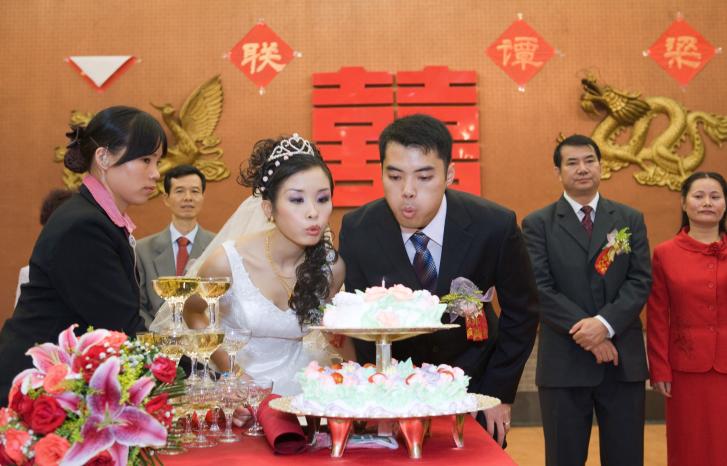Some countries practice death penalty for having gay sex. In other countries, gay people are victims of honour killings. It is not without reason that sexual orientation provides grounds for asylum. But in order to be granted protection, you have to be the “right type of gay”.
“The right type of gay is someone who is willing to live out his or her sexual orientation openly and in public, according to UDI’s guidelines. If you voluntarily want to hide your sexual orientation, for example out of consideration for your family, you have no right to protection,” says Deniz Akin.
She is about to complete her PhD thesis on Norway’s treatment of non-heterosexual – or queer – asylum seekers. She has examined the legal material an interviewed both caseworkers at UDI and asylum seekers she met through the special interest organisation Queer World (Skeiv Verden).
Small number
Each year approximately 70 people seek asylum in Norway based on their sexual orientation. In total, approximately 10.000 people seek asylum in Norway each year (more than 31.000 in 2015). Thus, the group of people who base their application on sexual orientation is very small.
“Many don’t even know that this provides grounds for asylum. Additionally, it may be difficult to talk about. It is private,” says Akin.

UDI has a different view on the situation. Acting area manager Nina Ø. Skaugvolldal says that according to their experiences, people are well aware of the fact that sexual orientation gives grounds for protection. Moreover, UDI says that they do their utmost to take the applicants’ diversity into consideration. Read UDI's full reply.
Danger of persecution central
The regulations follow a step-by-step approach to these applicants. A gay asylum seeker must make probable that he is, or is perceived as, gay. In addition, there must be reason to believe that the applicant is in danger of persecution in his or her country of origin. UDI receives information about legislation and practice in other countries through a number of various sources, but it can be incorrect, according to Akin.
She refers to the UN’s high commissioner for refugees who emphasises that relevant countries’ information about the situation for LGBTQ people is often missing. Injustice towards certain groups may be particularly under-reported, according to their manual. Here, bisexuals, lesbians, transsexuals and intersexuals are mentioned.
The next point for assessment of asylum seekers is whether it is probable that the applicant will be open about his or her sexual orientation in cases of return to the country of origin.
A gay asylum seeker must make probable that he is, or is perceived as, gay.
This point in Norwegian law was altered in 2012 following a British Supreme Court sentence that established it as illegal to leave asylum seekers to live ‘in the closet’ in order to escape persecution. However, if the asylum seeker wishes to hide his or her sexual orientation solely out of consideration for the family, for instance, the application may still be rejected.
To be entitled to protection, the danger of persecution must be the central reason for keeping your sexual orientation a secret.
This has been, and still is, a topic for discussion. According to Akin, this practice is problematic.
“How open you are about your own sexual orientation changes over time for many people. In parts of your life you may be open to people, whereas in other parts you might want to keep it to yourself.”
Some hide their sexual identity to their family while simultaneously being open about it in certain social circles. Changes in the political climate may also affect the degree of openness.
At the same time there is no consensus regarding what it means to express one’s sexuality in a risky manner. The legislation leaves room for discretion.
An official report* on the treatment of queer asylum seekers appeared in 2015. Here, UDI and UNE’s (the Immigration Appeals Board) practice was evaluated. One of the recommendations was a clearer investigation of this particular point:
“UDI should consider developing new types of follow-up questions in LGBTQ cases which may better establish the applicant’s grounds for discretion upon return.”
Feelings – not sex
In her research project, Akin has studied how asylum seekers adjust to the authorities’ guidelines, but also how the caseworkers apply these guidelines. According to her findings, they prefer certain types of stories.
“’A proper queer’ is also someone who can reflect upon feelings related to being queer. They should reflect upon how it is to be stigmatised in their home country. If this is mirrored in their testimony, it provides grounds for believing that you actually risk persecution and that you are who you pass yourself off as.”
And preferably, you should not talk about sex, according to Akin.
Preferably, you should not talk about sex.
“Male asylum seekers in particular are often eager to tell about their sexual experiences. Perhaps they open their account on Grindr (social gay network online) and show this to their caseworker, but the caseworker doesn’t want to see it. Talking about sexual practice is not well received. On the contrary, UDI may take this as a sign that the person is lying.”
Caseworkers are not supposed to ask the asylum seekers about their sex life, according to EU regulation on the area. UDI disagrees with Akins assessment in these matters. Read UDI's full reply.
See also: Hidden stories about sex and gender in the new Norwegian Queer Archive
Trained to detect lies
However, Akin’s impression of the caseworkers was that they were very open-minded. But at the same time, they’re trained to detect lies. Therefore, they often have a clear opinion of a case long before sexuality becomes an issue, she says.
“Sometimes they reject a person because they don’t believe him or her to be gay. But often they don’t even get that far before they conclude that the stories they are told are inconsistent. For instance, they might ask how the person came to Norway, and already at this stage the story may appear completely unlikely.”
This was also an issue before the mentioned report from 2015:
“UDI should consider whether it would be in conflict with the step-by-step approach to take into consideration the general credibility before or instead of the credibility of sexual orientation.”
Favours romantic love
According to Akin, her findings show that UDI’s attitudes reflect society as such: Previous research shows that romantic love is considered the most legitimate reason for relationships.
Organisations working for sexual emancipation have avoided the term ‘homosexual’ as a strategy to place the focus on love rather than sex.
“In order to improve the system, we need to focus on how actors preserve and reproduce the idea of the acceptable queer.”
Akin emphasises that in society, some sexual practices are considered healthy whereas others are regarded as unhealthy. Additionally, the sexuality of ethnical others are often considered primitive or suppressive.
“There is no reason to make UDI a scapegoat in these cases. Their caseworkers follow the guidelines. In order to improve the system, we need to focus on how actors within Norwegian sexual politics – from politicians to organisations such as Queer World and FRI (National Association for Lesbians, Gays, Bisexuals and Transgender People) – preserve and reproduce the idea of the acceptable queer.”
Rainbow splash
According to Akin, the idea of a correct queerness is also reflected in the asylum seekers’ stories. When adjusting to the Norwegian model, they try to translate their own sexual orientation in order to make it credible here. One example of such a strategy is what Akin terms 'rainbow splash'.
“Some asylum seekers quickly assume the role as loud and proud politically active queers. They try to be as visible as possible in order to gain credibility as queers.”
Moreover, visibility is a well-known strategy for increasing the need for protection. If asylum seekers are openly gay in the media and their sexual orientation is published online, this may be picked up by the authorities in their home country.
Some fall outside
According to Akin, the problem with the Norwegian system is that some fall outside. Not everybody can handle the visibility. Some don’t dare to go public out of consideration for their family or for their own safety or out of fear of being excluded at the asylum reception centre.
Furthermore, some people may be in need of protection despite of the fact that their queerness don’t fit our ideals.
“We should focus on finding the people who are in danger, not those who are queer in the correct way.”
“Some may risk persecution when they have sex with a partner of the same gender even though they don’t necessarily dream about having a family, or mention the word ‘love’. There will be more acceptance if more types of sexual orientation is represented and discussed in the public sphere,” says Akin.
She thinks the system will improve if society deals with its own prejudices and increases the tolerance for queer diversity.
“We should focus on finding the people who are in danger, not those who are queer in the correct way.”
Wants to uncover holes in the system
Akin acknowledges that due to limitations in her choice of methodology, there are stories she wish she had access to that are missing.
“I found my informants through Queer World. Thus, my informants are among those who have the opportunity to look up organisations like this. But not everyone has the sufficient resources or knowledge for this. Not everyone wants it.”
“You were involved in Queer World as a volunteer. Could that have influenced your research?”
“Although I was involved in Queer World I was of course very careful to make thorough research ethical assessments along the way. For instance, I did not use any personal information without informed consent.”
According to Akin, it was well known that she was there as a researcher when she was present at social gatherings. Some of the asylum seekers referred her to the media where she could read their stories. They didn’t want to tell them again. Others she preferred not to interview because she knew them too well.
“So I ended up with ten ‘official’ interviews,” she explains.
“Among other things, your research shows what UDI is interested in when considering applications for political asylum. Are you worried that your research may lead to increased misuse of the asylum system?”
“No, I don’t think it will. I want to uncover holes in the system in order to help improve it. My experience of UDI is that it is an institution that is eager to learn and acquire new knowledge. The case workers are professional interviewers trained to detect lies and stories that don’t add up.”
Sources:
*Forfølgelse basert på religion og medlemskap i en spesiell sosial gruppe (seksuell legning) - praksis i UDI og UNE etter Høyesteretts dom av 29. mars 2012, av Cecilie Schjatvet, HESTENES og DRAMER & Co. (Persecution based on religion and membership in a specific social group (sexual orientation) - practice in UDI and UNE after Supreme Court sentence of 29 March 2012)
Assessing Sexual Orientation- Based Persecution, Lambda Nordica 1/2015, Deniz Akin
GI-07/2012 Instruks om tolkning av Utlendingsloven § 28 første ledd bokstav a – forfølgelse på grunn av seksuell orientering og kjønnsidentitet, Justis- og beredskapsdepartementet, 2012 (Instruction for interpretation of the Immigration Act § 28: persecution based on sexual orientation and gender identity, Ministry of Justice and Public Security, 2012).
Translated by Cathinka Dahl Hambro
The step-by-step model asks the following questions:
- Is the applicant really gay?
- Is the applicant likely to be persecuted if he or she lives out his/her sexual orientation openly?
- How is the applicant likely to live after return (openly/in secret)? Several conditions will be taken into consideration here, such as information from the applicant, the general situation in the applicant’s home country, and how the applicant lived in the country of origin before departure and in Norway.
- If the applicant is likely to hide his/her sexual identity upon return, what is the reason for this? If fear of persecution is the primary reason, asylum will be granted.
The EU legislation on this matter is partly based on a so-called phallometric test previously used by Czech authorities when considering certain queer asylum seekers: They showed heterosexual porn and measured the blood flow to the applicant’s penis. Applicants who showed signs of sexual excitement were rejected. The test was voluntary, but the practice was criticised as undignified. In 2014, the European Court of Justice concluded that this type of tests, as well as questions concerning the applicant’s sexual practice, is contrary to peoples’ right to privacy.



